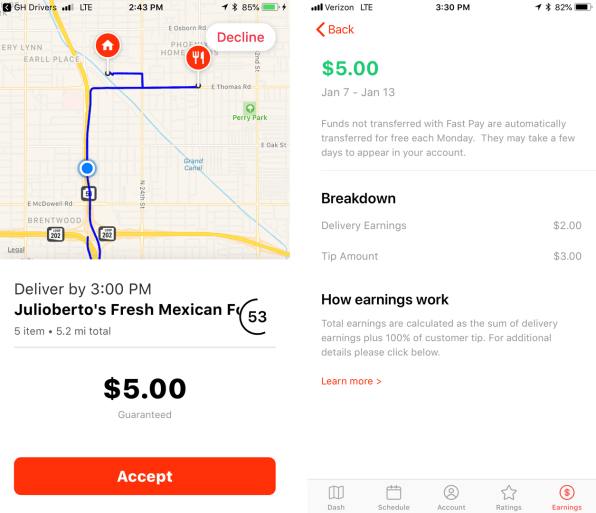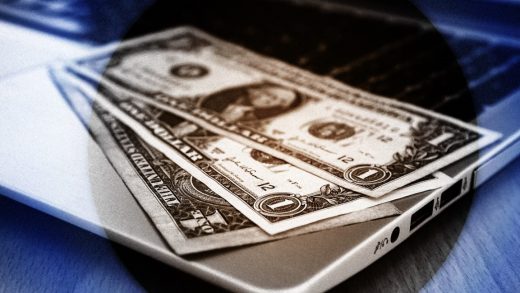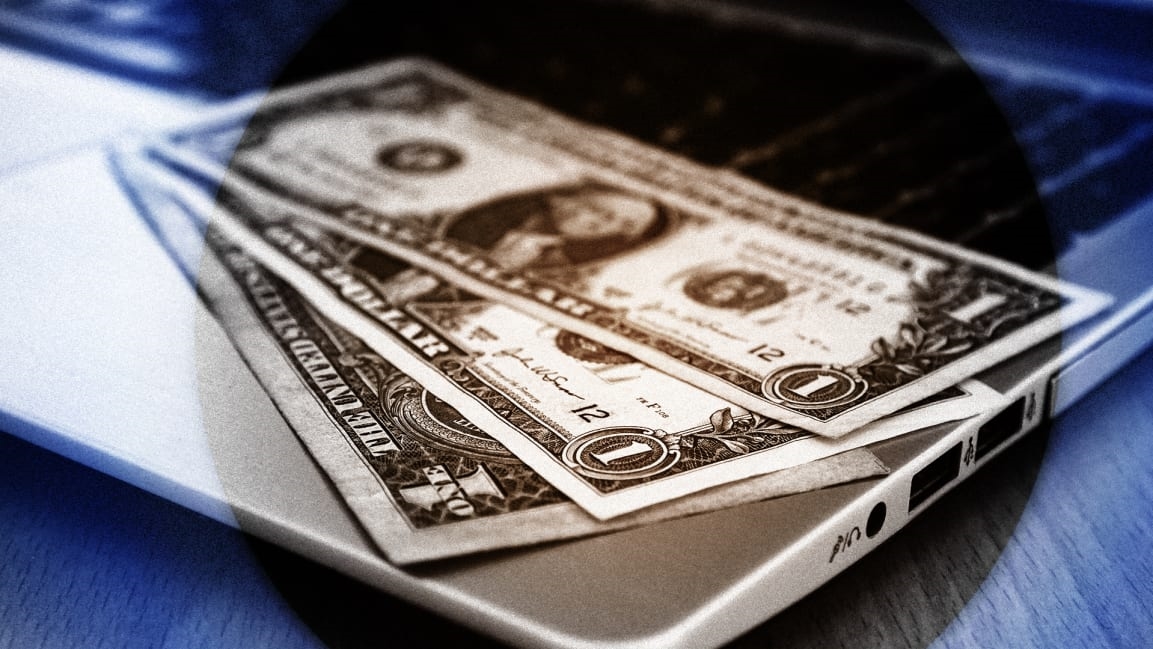Delivery workers: Tip us in cash so companies have to pay us more
A protest is growing among gig economy workers unhappy with the way that employers use tips to calculate their pay. With companies like DoorDash (and until recently, Instacart), tips count toward the minimum compensation they quote for each assignment, instead of being a customer add-on for a job well done. In addition, Amazon Flex uses tips to subsidize its guaranteed hourly pay, according to a Los Angeles Times investigation.
But that process works only if customers specify a tip in the ordering app. If the specified tip is zero, these companies are forced to pay more from their own pockets to fulfill the fees they quote to contractors.
So workers and advocates are making a request to the public: Tip in cash when the delivery arrives, so 100% of the tip goes to them, on top of what the company has already agreed to pay. DoorDash and Instacart have been the most prominent targets of these actions. The website notipdoordash.com for instance, illustrates how DoorDash counts a tip toward final pay with examples of two food orders a driver placed as an experiment.
The app quotes a $6.34 “guaranteed amount” for the assignment–provided by DoorDash’s pay algorithm, introduced in late 2017 to calculate the value of work that goes into a job. First, the driver sets a zero tip (the default is typically 15%). Thus DoorDash pays the full $6.34. The driver then places another order from the same restaurant, specifying an $8 tip in the app. After the delivery, he learns that he’s made $9 total–the entire tip, plus the $1 minimum contribution that DoorDash pledges to make on all orders.
DoorDash states in its driver pay FAQ and confirms to Fast Company that tips count toward the guaranteed amount. If the tip falls short, DoorDash makes up the difference. If the tip exceeds the amount, the worker gets the whole tip, plus a dollar from DoorDash.
Amazon Flex (which uses private contractors to make all types of Amazon deliveries) guarantees an hourly, rather than per-job, payment of at least $18. This appears to include tips. “We add any supplemental earnings required to meet our commitment that delivery partners earn $18-$25 per hour,” the Los Angeles Times reports that Amazon stated in multiple emails to drivers.

While these companies are all making the promised payments, some drivers feel they are getting shortchanged by not receiving the tip on top of the guaranteed amount. To remedy it, they ask that customers tip in cash. The DoorDash and Instacart apps say nothing about the practice, but Amazon’s app states, “Cash is not accepted upon delivery.” The customer can change the tip amount paid through the app (typically charged to a credit card) up to 24 hours after the delivery on Amazon and up to three days after delivery on Instacart. (Changing a DoorDash tip requires contacting customer service.)
Economist Sylvia Allegretto of the Institute for Research on Labor & Employment at the University of California, Berkeley, agrees with the drivers’ strategy. “What I’ve been telling people [is] if you tip, perhaps you should tip–which I do–in cash,” she says. “So I know that it goes to the worker, and the business will know nothing about it and can’t get their hands on it.”
What companies like Amazon and DoorDash refer to as tips are not really tips, according to Allegretto. “It’s a wage subsidy to the firm,” she says. The practice is not unique to the app-based gig economy. The federal government has long allowed employers of tipped workers, like restaurants, to pay a sub-minimum wage (currently $2.13 per hour) and use tips to make up the difference toward the minimum wage (now $7.25 an hour under federal law). Most state laws also allow this “tip credit” practice. And as contractors, workers for companies like Amazon, DoorDash, and Instacart aren’t protected by federal, state, or local wage laws.
On January 17, Instacart contractors began a similar tipping campaign to the one for DoorDash workers, asking customers to specify a symbolic tip of 22¢ so that the company would have to pay more.
Instacart says that its algorithm does not factor the tip into the fee it calculates for a job, called the “batch payment.” Any tips are added on top of that amount. However, Instacart had guaranteed that every job would pay at least $10, and tips did count toward that guaranteed amount.
The protest, and press coverage of it, prompted Instacart to announce changes to its pay policy. On February 3, it told Fast Company that the minimum batch payment would be set at $3. And on February 6, it raised the minimum to a range of $5 to $10, depending on the job. This money comes from Instacart’s own pocket, regardless of what the tip amount is and separate from bonuses for things like deliveries during peak demand times.
DoorDash and rival Amazon Flex have said they will not change their pay policies to follow Instacart’s lead.
Disgruntled Instacart drivers remain wary and are unhappy with how Instacart calculates the batch pay, based on a new algorithm introduced in 2018. They are continuing to organize in coordination with labor rights group Working Washington. Matthew Telles, an Instacart driver and labor organizer, wants to extend the 22¢ protest across the industry. “Moving forward, we are trying to get ALL delivery contractors to use the 22¢ method as a signal that [the tip] will either be adjusted [after the delivery] or cash,” he told me over chat. A zero tip might just make the customer look like a cheapskate, but 22¢ would be a kind of wink to the driver that a better tip will be coming.
Jake Kronborg, a gig economy driver who also provides consulting services to other drivers, advises cash tipping–usually. “Most of them, yes, Grubhub no,” he says of delivery services. “[With] Grubhub, the drivers can actually tell whether you gave a tip beforehand or not. If there’s no tip, a lot of them will just reject [the order], and you end up getting your food an hour later.”
Kronborg admits that there’s another reason why cash tips are preferred–one that goes back long before the app economy. While payments from a company show up on a contractor’s 1099 tax form, cash tips from customers do not, allowing drivers to claim lower income and pay less in taxes.
(47)



